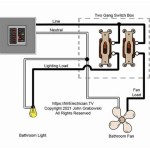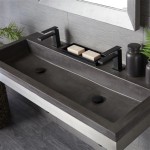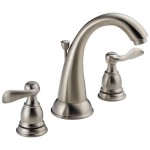How to Get Rid of Mold in Bathroom Walls and Ceiling
Mold growth in bathrooms is a common problem caused by high humidity levels. The combination of steam from showers, condensation from warm air, and poor ventilation creates an ideal environment for mold spores to thrive. Mold can grow on walls, ceilings, grout, and even within the shower itself, presenting a health hazard and an aesthetic eyesore. Fortunately, with the right steps, you can effectively eliminate mold and prevent its return.
1. Identify the Source of Moisture
Before tackling the mold itself, it's crucial to address the root cause of its appearance. This step is essential for preventing future outbreaks.
Start by taking note of the areas where mold is most prevalent. Is it concentrated around the shower, near the vent, or in a specific corner? This can help pinpoint the source of moisture. Consider the following possibilities:
-
Poor Ventilation:
Insufficient ventilation allows humid air to linger, creating a breeding ground for mold. Ensure your bathroom has a functioning exhaust fan and use it during and after showers. -
Leaky Pipes or Faucets:
Water leaks, even small ones, can provide a constant source of moisture. Carefully inspect pipes and faucets for leaks. -
Improper Showering Habits:
Leaving the shower curtain closed after showering can trap moisture and promote mold growth. Ensure the shower curtain or door is kept open to allow for proper ventilation. -
Lack of Caulking:
Gaps between shower tiles, tubs, and walls can provide entry points for moisture. Regularly check and reapply caulking as needed.
Once you've identified the moisture source, take appropriate steps to resolve it. This may involve:
- Installing a more powerful exhaust fan or increasing fan usage.
- Repairing leaky pipes or faucets.
- Adjusting showering habits to allow for better ventilation.
- Applying new caulk to seal any gaps.
2. Clean and Remove Mold
After addressing the moisture source, you can begin cleaning and removing the existing mold. This process requires caution, as mold spores can be harmful if inhaled.
Safety First:
Wear protective gear when cleaning mold, including gloves, goggles, and a respirator mask to prevent inhalation of spores.
Choose the Right Cleaning Solution:
A mixture of water and bleach is effective for killing mold. Mix one cup of bleach with one gallon of water in a spray bottle. Other potential cleaning solutions include:- Borax: A natural cleaning agent that can inhibit mold growth.
- Tea Tree Oil: A natural antifungal agent that can help control mold.
- Vinegar: A natural disinfectant that can help kill mold spores.
Cleaning Process:
-
Scrub the Mold:
Apply the cleaning solution to the moldy areas, using a scrub brush or sponge. Pay particular attention to cracks and crevices. -
Rinse Thoroughly:
After scrubbing, rinse the cleaned areas with clean water. Be sure to remove all traces of the cleaning solution. -
Dry Completely:
Allow the cleaned areas to dry completely. This may require using a fan or dehumidifier to accelerate the drying process.
Important Note:
If you notice extensive mold growth or suspect mold growth behind walls or ceilings, consult a professional mold remediation specialist. They have the expertise and equipment to properly assess and remove the mold, ensuring it's done safely and effectively.3. Prevent Mold Growth
After successfully removing mold, the next step is to take preventative measures to prevent its return.
Maintain Ventilation:
Use the bathroom exhaust fan every time you shower, even for short showers. Consider leaving the fan running for a few minutes after showering to ensure adequate air circulation.
Dry Surfaces:
Wipe down shower walls and floors after each use to remove excess moisture. This simple step can significantly reduce the risk of mold growth.
Control Humidity:
Use a dehumidifier in your bathroom, especially during humid seasons or if you frequently take long showers. A dehumidifier helps to reduce the moisture in the air, creating a less hospitable environment for mold.
Regular Inspection:
Inspect your bathroom regularly for signs of mold growth. This proactive approach can catch small mold problems early, preventing them from becoming larger and more difficult to address.By following these steps, you can effectively get rid of mold in your bathroom and create a healthy and mold-free environment.

Bathroom Ceiling Mold Removal When To Clean Call Branch Environmental

Cleaning Mold From Bathroom Ceilings Like A Pro Lovetoknow

Don T Let Mould Take Over How To Remove It From Your Ceiling

How To Get Rid Of Mold In Bathroom 2024 Tips From Puroclean

Cleaning Mrs Hinch Fans Share Tips To Remove Ceiling Mould Express Co

How To Clean Black Spots In The Bathroom Family Handyman

How To Get Rid Of Mold In The Shower On Bathroom Walls Clorox

How Do You Get Rid Of Mould On Bathroom Walls Igloo Surfaces

How To Remove Mould From Your Bathroom Ceiling Cleanipedia Za

How To Remove Black Mold From A Bathroom Ceiling
Related Posts







